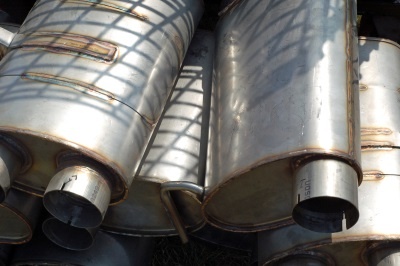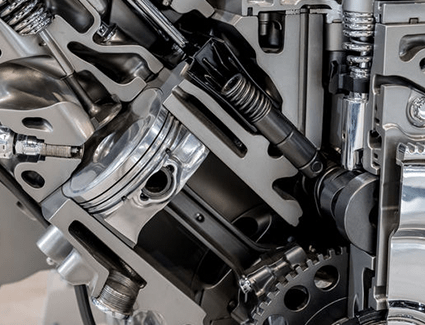Radiator is Leaking from the Bottom
A radiator leaking from the bottom typically indicates a problem with the drain plug or corrosion in the radiator itself. An immediate inspection is necessary to prevent engine damage.
Discovering a leak at the bottom of your radiator can be alarming and warrants prompt action. Your radiator is an integral part of your vehicle’s cooling system, and leaks can lead to overheating and extensive engine damage. It’s essential to address these issues swiftly to maintain your car’s performance and longevity.
Usually, the culprit is either a faulty drain cock or deterioration due to rust and sediment build-up. Despite the urgency, a leaking radiator doesn’t always mean a costly repair; in some cases, a simple sealant can fix the issue. Nevertheless, identifying the exact cause of the leak is crucial for a proper fix. Ignoring the problem can lead to a cascade of engine troubles that are both avoidable and expensive to repair. Immediate investigation and repair will ensure your vehicle remains reliable and roadworthy.
Signs Of A Radiator Leak
Is your car leaving suspicious puddles where it’s parked? It might be shouting for help with a radiator leak. Let’s decode the signs that your radiator is waving a red flag, so you can fix it before it leads to bigger troubles.
Puddle Under The Car
A clear sign of trouble is a pool of liquid under the vehicle. After parking, check the ground for wet spots. A consistent puddle after each drive could point to a leaking radiator, especially if the liquid is greenish or yellowish. This coolant has leaked from the radiator’s bottom, a hotspot for corrosion and wear.
Reduced Coolant Levels
Keep an eye on your coolant reservoir. If the level drops quickly, suspect a leak. The coolant system should be sealed and maintain a consistent level. Dipping levels mean the fluid is escaping somewhere, likely from the radiator.
- Regularly review the coolant reservoir.
- Note any sudden decrease in fluid levels.
- A sealed system should not lose coolant fast.
Spotting these signs early could save your vehicle from more serious damage. Regular checks prevent engine overheating and costly repairs. If you notice any of these issues, visit a mechanic for a proper diagnosis and timely repair.

Credit: forums.pelicanparts.com
Common Causes Of Bottom Radiator Leaks
Is your radiator leaking from the bottom? Understanding the common causes helps you find a quick solution. Several reasons might cause this problem. Let’s explore some frequent culprits below.
Corrosion And Rust
Radiators can corrode and rust over time. This wear and tear often result in leaks. Factors like age, poor maintenance, or use of incorrect coolant increase this risk. Look for discolouration or flaking metal at the bottom of the radiator as tell-tale signs.
Loose Drain Plug
The drain plug, also called the petcock, is a small valve at the bottom of the radiator. Its job is to release coolant. If not tight, coolant can trickle out. It’s simple: secure the plug, and you might solve the leak.
Damaged Radiator Hose
A radiator hose connects the radiator to the engine. Hoses can crack, split, or break. Any damage could cause coolant to escape. Regular checks can help prevent this issue. Replace any worn or damaged hoses immediately.
Immediate Steps To Take
Discovering a leaky radiator at the bottom can cause a panic. Knowing the right steps to manage this can save time and prevent damage. Explore immediate actions to control the situation efficiently.
Turn Off The Engine
Stop driving and turn off the car immediately. Heat from the engine can worsen the leak. It is crucial to let the engine cool down before you proceed. Avoid opening the radiator cap; it’s hot and under pressure.
Check The Coolant Level
- Wait for the engine to cool completely. It may take at least 30 minutes.
- After the engine cools, find the coolant reservoir. It’s usually a plastic container near the radiator.
- Check the level of coolant. If low, it confirms the leak.
- Use gloves to remove the cap. Refill with the proper coolant if necessary.
Credit: www.clubrsx.com
Long-term Fixes
Discovering a leak at the bottom of your radiator can be unsettling. Such leaks often signal the need for a durable solution to prevent further damage and costs. Let’s explore long-term fixes that can bring back the efficiency of your heating system and ensure lasting results.
Radiator Replacement
When sealants fail and repairs fall short, replacing the radiator becomes the most reliable fix. This involves:
- Selecting a new radiator that fits your space.
- Ensuring it matches your system’s requirements.
Professional installation is recommended to guarantee a proper fit and optimal performance. Handling the swap yourself? Follow these steps:
- Turn off your heating system and let it cool.
- Drain the radiator.
- Disconnect and remove the old unit.
- Install the new radiator.
Remember, investing in a new radiator can enhance your home’s energy efficiency and value.
Using Sealant For Minor Leaks
For tiny, pinpoint leaks, a sealant may offer a quick fix. Sealants work by forming a solid bond over the leak. Consider these tips when using a sealant:
- Choose a sealant compatible with your radiator.
- Clean and dry the leak area before application.
- Apply the sealant as instructed by the product.
Pro tip: Sealants are a temporary solution. Schedule a follow-up with a professional to assess the need for a more permanent fix.
Preventing Future Leaks
Preventing Future Leaks is crucial to ensure your vehicle’s radiator functions effectively. A leaking radiator can cause significant engine damage. You can prevent leaks with proper care and attention. Below, learn steps to help keep your radiator in top shape.
Regular Maintenance
Radiators require regular check-ups to work well. Simple actions can save you from major repairs. For instance:
- Check radiator hoses for wear and tear.
- Tighten clamps to prevent loosening over time.
- Clean the radiator exterior to maintain airflow.
Using Quality Coolant
The right coolant mixture protects your radiator. Follow these steps:
- Use a 50/50 mix of coolant and water.
- Select coolant with corrosion inhibitors to protect internal components.
- Change the coolant based on the manufacturer’s recommendation.
Routine Inspections
Routine checks catch issues before they worsen. Include these tasks in your inspections:
- Look for signs of rust or sediment.
- Check for wet spots beneath the vehicle.
- Ensure the pressure cap is functioning correctly.

Credit: carspecmn.com
Frequently Asked Questions For Radiator Is Leaking From The Bottom
Why Is My Radiator Leaking From The Bottom?
A leak from the bottom of a radiator often indicates a problem with the radiator valve or a corroded bottom panel. Regular inspection and maintenance can prevent further damage and costly repairs.
Can I Fix A Leaking Radiator Myself?
Yes, minor leaks can sometimes be fixed with sealant or by tightening connections. However, for larger issues or if you’re unsure, it’s advisable to seek a professional plumber for a reliable fix.
How Much Does It Cost To Repair A Radiator Leak?
The cost to repair a radiator leak varies based on the leak’s severity and the repair’s complexity. Simple fixes may cost relatively little, while complete replacements can be more expensive.
What Are The Risks Of Ignoring A Radiator Leak?
Ignoring a radiator leak can result in increased water damage, mold growth, and inefficiency in your heating system. It might also lead to complete radiator failure and a costly replacement.
Conclusion
Concluding, a leaking radiator from the bottom is a common but fixable issue. Address it swiftly to prevent engine damage and maintain vehicle performance. Remember, regular maintenance checks can minimize the risk of such problems. Take action today for a smoother, safer drive tomorrow.







